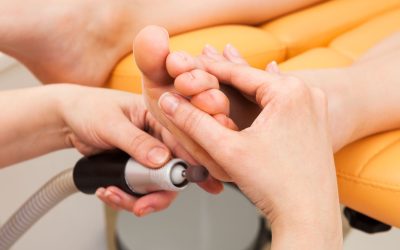Lower back pain is one of the most common complaints among individuals of all ages and can be a result of many factors, including poor posture, muscle strain, herniated discs, or degenerative disc disease. When dealing with chronic lower back pain, many people seek alternatives to invasive treatments like surgery. One effective non-surgical option is spinal decompression therapy, a gentle, non-invasive technique designed to relieve pressure on the spine and promote healing.
Understanding Lower Back Pain and Its Causes
Lower back pain can occur for a variety of reasons, ranging from everyday stress on the spine to more severe conditions like herniated discs or spinal stenosis. Common causes of lower back pain include:
- Herniated Discs: When the soft inner part of a spinal disc pushes through the outer layer, it can press on nearby nerves, leading to pain, numbness, and weakness in the lower back and legs.
- Degenerative Disc Disease: As we age, the discs between the vertebrae lose their cushioning ability, which can lead to pain and stiffness.
- Spinal Stenosis: This condition occurs when the spaces in the spine narrow, putting pressure on the spinal cord and nerves.
- Muscle Strain: Overuse, improper lifting, or sudden movements can strain the muscles in the lower back, leading to pain and discomfort.
For many people, conservative treatments like physical therapy or medications can provide temporary relief. However, for those dealing with chronic pain, spinal decompression therapy may be a better solution that addresses the underlying causes of the pain.
What is Spinal Decompression Therapy?
Spinal decompression therapy is a non-invasive, drug-free treatment designed to reduce pressure on the spine and promote healing in the affected area. The therapy uses a motorized traction system to gently stretch the spine, creating space between the vertebrae and discs. This process helps to alleviate pressure on the spinal nerves, reduce inflammation, and improve the body’s natural healing ability.
Spinal decompression is typically performed on a special table, where the patient is comfortably positioned. The motorized traction system is then engaged, and controlled forces are applied to the spine. The goal is to create a negative pressure within the discs, which can encourage the herniated material to retract into its proper position and relieve nerve compression.
1. Reducing Pressure on Spinal Discs
One of the primary benefits of spinal decompression therapy is its ability to reduce pressure on the discs between the vertebrae. This is particularly important for individuals with herniated discs, as the pressure from the disc can cause nerve irritation, leading to pain and numbness. By gently stretching the spine, spinal decompression allows the discs to retract and return to their natural position, providing relief from pressure on the nerves.
2. Promoting Healing of Damaged Tissues
Spinal decompression therapy promotes the flow of oxygen, nutrients, and blood to the injured tissues. The gentle traction increases blood circulation, allowing the body to heal naturally and reduce inflammation in the affected area. By promoting cellular regeneration and tissue repair, spinal decompression helps to alleviate pain and speed up recovery.
3. Reducing Muscle Tension
Chronic lower back pain can cause the muscles around the spine to become tense and tight. Spinal decompression helps relax the muscles, which can alleviate pain and improve flexibility. This relaxation of the muscles supports the overall healing process and helps prevent further strain or injury.
The Benefits of Non-Surgical Spinal Decompression for Lower Back Pain
Spinal decompression therapy offers several advantages over traditional treatments for lower back pain, particularly for those who want to avoid invasive procedures like surgery. Here are some of the key benefits of non-surgical spinal decompression therapy:
1. Non-Invasive and Drug-Free
Spinal decompression is a non-invasive treatment, which means it doesn’t require surgery or the use of medications. This is especially beneficial for individuals who want to avoid the potential risks and side effects associated with surgery or long-term medication use. Non-surgical spinal decompression offers a safe alternative that can provide lasting relief without the need for invasive procedures.
2. Pain Relief Without Medications
Unlike pain medications, which only mask the symptoms, spinal decompression addresses the root cause of the pain by relieving pressure on the affected spinal discs and nerves. This leads to more sustainable, long-term relief without the need for reliance on painkillers.
3. Improved Mobility
Lower back pain can significantly limit your mobility, making it difficult to perform everyday activities. Spinal decompression therapy works by improving spinal function and reducing pain, which helps to restore mobility and flexibility. Many patients experience improved range of motion and increased ability to move freely after just a few sessions.
4. No Recovery Time
Unlike surgery, which often requires a long recovery period, spinal decompression therapy involves minimal to no downtime. Most patients can resume normal activities shortly after each session, making it a convenient option for individuals who need to manage their pain without disrupting their daily life.
Spinal Decompression Therapy for Herniated Discs and Other Lower Back Conditions
Spinal decompression therapy is particularly effective for individuals suffering from herniated discs, but it can also provide relief for other lower back conditions, such as:
- Degenerative disc disease
- Sciatica (pain radiating down the leg)
- Spinal stenosis
- Muscle strains
By addressing the underlying causes of lower back pain and promoting healing, spinal decompression therapy can help improve overall spinal health and prevent future issues.
Is Spinal Decompression Therapy Right for You?
Spinal decompression therapy is a highly effective treatment for many individuals with lower back pain, but it may not be suitable for everyone. It’s important to consult with a healthcare provider to determine if spinal decompression is the right option for your specific condition. Chiropractors often incorporate spinal decompression into a comprehensive treatment plan, which may include other therapies such as corrective chiropractic care, physical therapy, and rehabilitation exercises.
To learn more about how spinal decompression for lower back pain can help relieve your discomfort and improve your mobility, visit Herfindahl Chiropractic in San Diego, CA, a trusted partner in providing non-surgical spinal decompression therapy.


